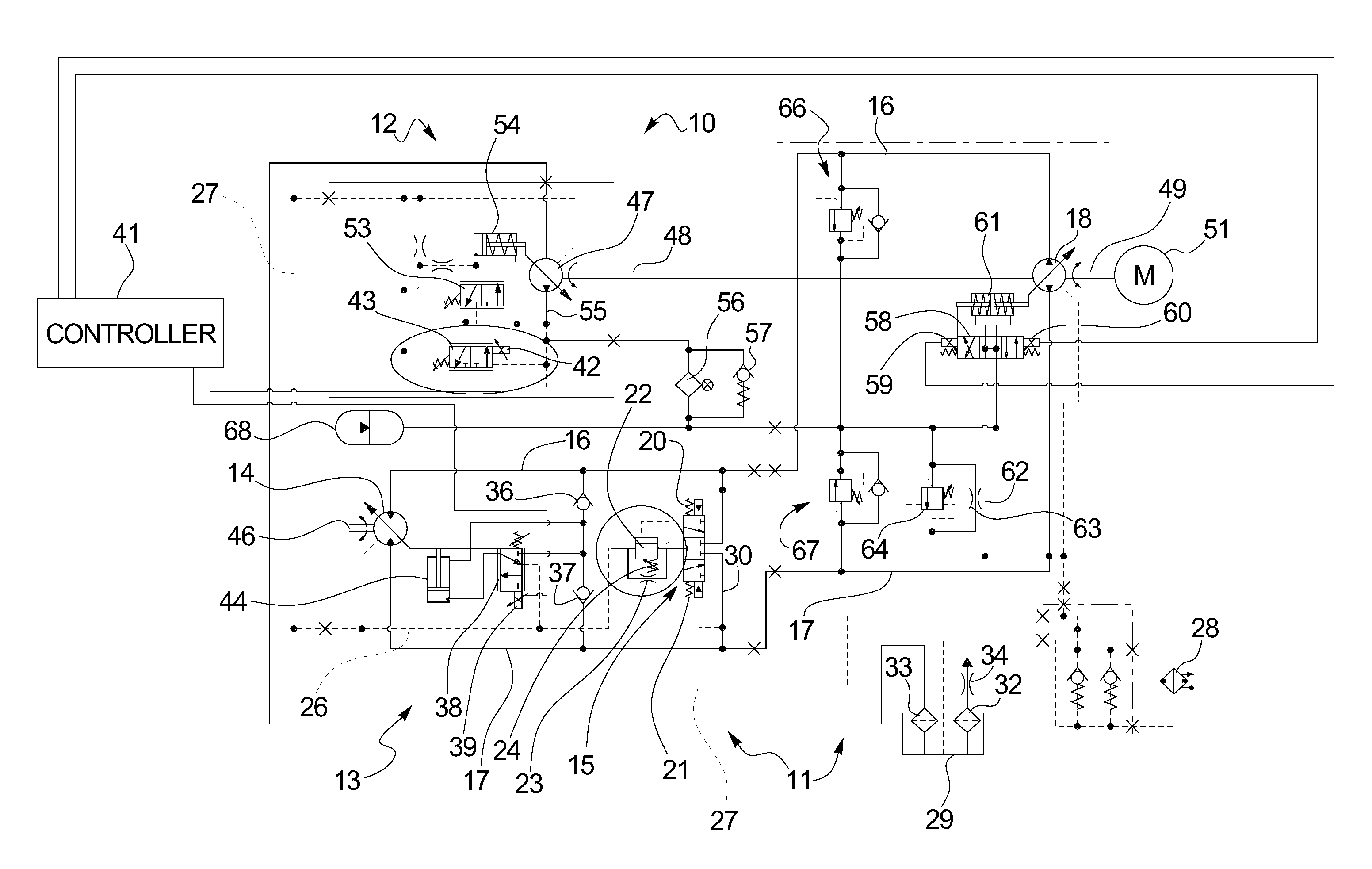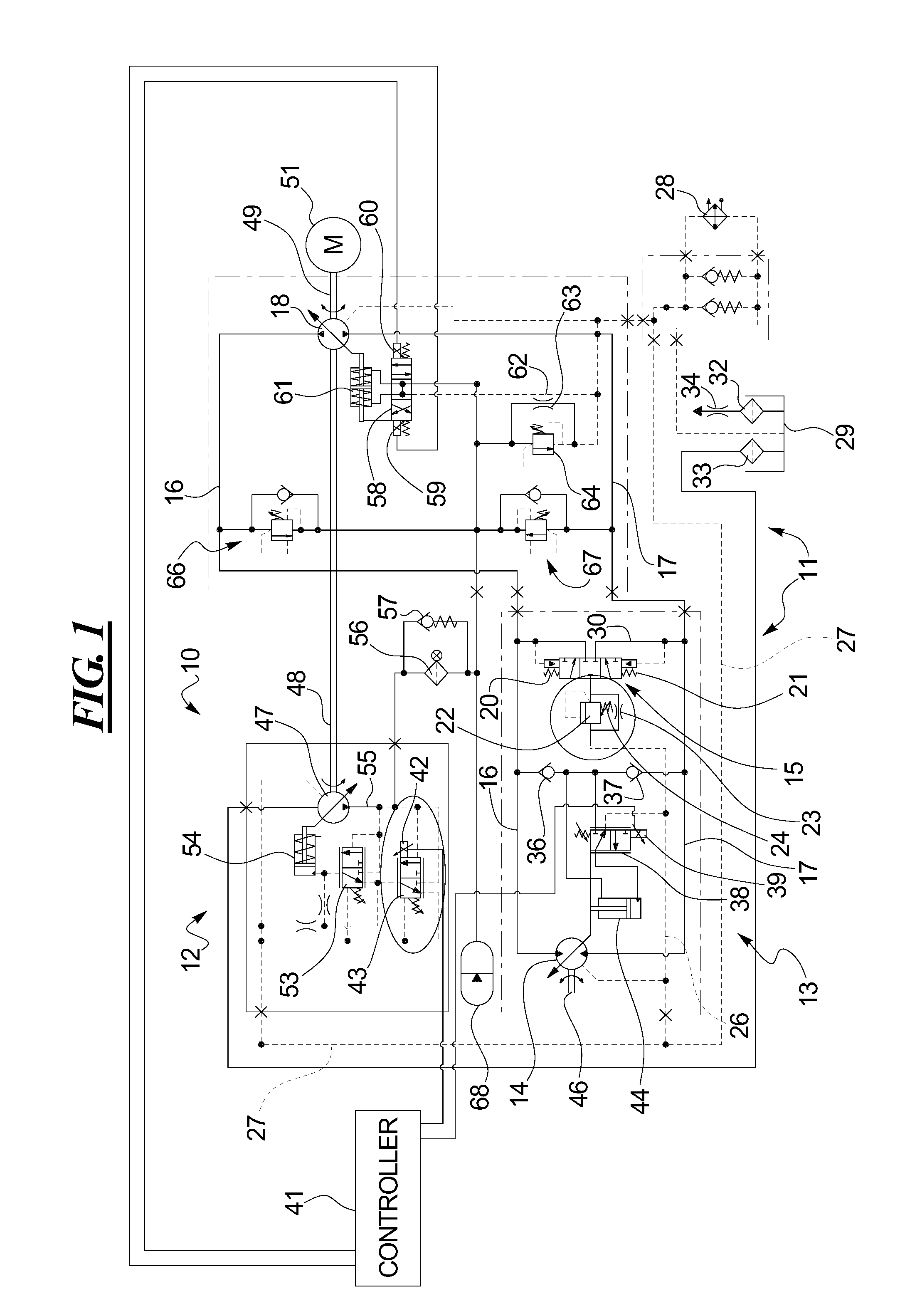Hydrostatic Circuits with Variable Charge and Variable Flushing Systems
a technology of hydrostatic circuits and flushing systems, which is applied in the direction of rotary clutches, couplings, fluid couplings, etc., can solve the problems of requiring premature replacement of hydrostatic fluids, excessive heat, and inability to meet the requirements of hydrostatic fluid replacemen
- Summary
- Abstract
- Description
- Claims
- Application Information
AI Technical Summary
Benefits of technology
Problems solved by technology
Method used
Image
Examples
Embodiment Construction
[0012]Use of the disclosed modulated circuit flushing flow may limit the power loss at low speed conditions to the lowest necessary loss and may still provide the requisite flushing and charge flow at high speed conditions.
[0013]Turning to FIG. 1, a closed hydrostatic circuit 10 is disclosed that includes a hydrostatic transmission 11 and a charge system 12. The hydrostatic transmission 11 also includes a flush system 13. The flush system 13 pumps cool pilot oil from the low pressure side of the bidirectional variable displacement hydrostatic motor 14 to maintain a sufficiently low temperature of the hydraulic oil, to cool the remainder of the hydrostatic circuit and to maintain the viscosity of the hydrostatic oil below about 12 sCt, although other oils of different viscosities may be used.
[0014]The flush system 13 includes a flush spool valve 15 which directs cooling flow from the cool or low pressure side of the hydrostatic transmission 11. Specifically, the hydrostatic transmiss...
PUM
 Login to View More
Login to View More Abstract
Description
Claims
Application Information
 Login to View More
Login to View More - R&D
- Intellectual Property
- Life Sciences
- Materials
- Tech Scout
- Unparalleled Data Quality
- Higher Quality Content
- 60% Fewer Hallucinations
Browse by: Latest US Patents, China's latest patents, Technical Efficacy Thesaurus, Application Domain, Technology Topic, Popular Technical Reports.
© 2025 PatSnap. All rights reserved.Legal|Privacy policy|Modern Slavery Act Transparency Statement|Sitemap|About US| Contact US: help@patsnap.com


